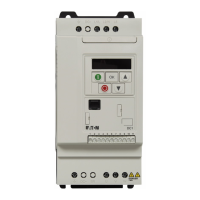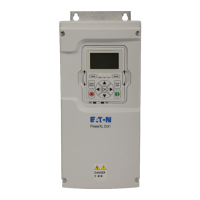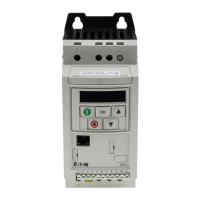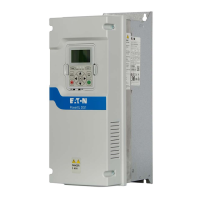104
CANopen External Communication Cards
POWERXL SERIES VFD MN040010EN—June 2018 www.eaton.com
CANopen overview
CANopen is a network system based on the serial bus
network Controller Area Network (CAN). The CANopen
communication profile (CiA-301) supports both direct
access to device parameters and critical process data
communications. CANopen device profiles (CiA DS-40X)
define standards for device functionality while providing
ample ability for additional vendor-specific device features.
CANopen is used in direct peer-to-peer data exchange
between nodes and the host machine. CANopen supports
cyclic and event driven communications, allowing for
reduced bus load and better performance with minimal
cable loss.
Device Profile Drives and Motion Control (CiA-402)
document represents the standardized CANopen Device
Profile for digital controlled motion products like servo,
drives or stepper motors. All these types of devices use
the same communication techniques that conform to
those described in the CANopen Application Layer and
Communication Profile. The starting and stopping of the
drive and several mode specific commands are executed by
the state machine.
CANopen communication objects transmitted via the CAN
network are described by services and protocols. They are
set up as follows:
•
The real-time data transfer is performed by the Process
Data Objects (PDOs) protocol
•
Service Data Object (SD) protocols provide the read and
write access to entries of a device dictionary
•
The Network Management (NMT) protocols provide
services for network initialization, error control and device
status control
CANopen message frame
Table 127. Message Frame
SOF COB-ID RTR CTRL Data Segment CRC ACK EOF
1 bit 11 bits 1 bit 5 bit 0–8 bytes 16 bits 2 bits 7 bits
SOF Start of Frame CRC Cyclic Redundancy Check
RTR Remote Transmission Request ACK Acknowledge
CTRL Control Field (i.e., Data Length) EOF End of Frame
COB-ID
The identification field of the CANopen-message is 11 bits.
D-Bit 109 876543210
COB-ID Function Code Node ID
The default identification field consists of a functional part and a module-ID part.
The functional part determines the object priority. This kind of identification field allows
communication between a master and 127 slaves. Broadcasting is indicated by a module-ID
of zero. Function codes are determined with object dictionaries in device profiles.

